This week I got to meet a new truffle variety my friends Natalie, Luke and their dog Eva sent me: The Blue Ridge Truffle or Imaia gigantea. Like every other variety I've eaten, it's unique, and has an interesting history. Here's a little bit about them, an excuse for you to get a truffle dog, and, most importantly, what they taste like.
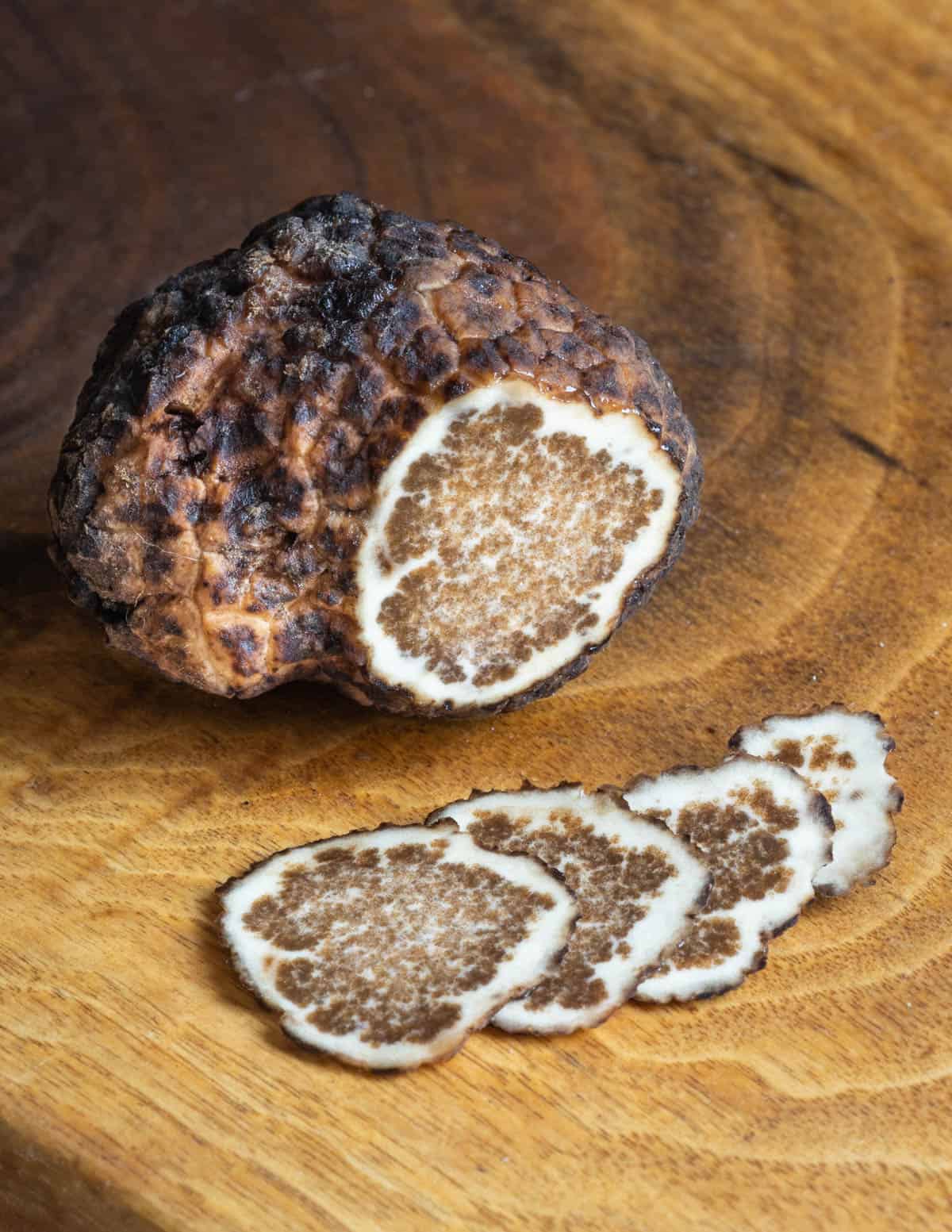
History
Imaia gigantea was first described in Japan in 1933 by Sanshi Imai, a mycologist from the Hokkaido Imperial University in Japan. They're occasionally referred to as Appalachian truffles, which is confusing as that name is more commonly used to describe Tuber canaliculatum. Originally the tubers were known as Terfezia gigantea. If you know your mushrooms you might know Terfezia as the genus home to dessert truffles.
Desert truffles have a mild flavor and are often as large as apples. They've been a traditional food for a long time, and are still sold in markets across the Middle East, as well as Morocco and Spain. Blue Ridge truffles are similar, but more aromatic.
Wild Goods
Big thanks to my friends Natalie and Luke of Wild Goods for sending these over. They're based in North Carolina where they harvest and sell a couple thousand pounds of wild mushrooms a year at farmers markets and have a shop at foraged.market If you're in the area, they also offer mushroom hunting forays and classes bookable through their website.

They're currently working with Gregory Bonito, a professor of soil and microbial sciences at Michigan State University to develop the first volatile compound profile of I. gigantea. That's basically saying they're trying to figure out where its aromas come from and why, and what that can mean for its classification in the fungal hierarchy.
A New Forest Crop
Truffles are a burgeoning industry in The United States. About ten years ago I managed to convince my dad to plant a few hundred oak and hazelnut trees inoculated with black French variety (Tuber uncinatum). Unfortunately deer loved uprooting the saplings and only a handful survived.
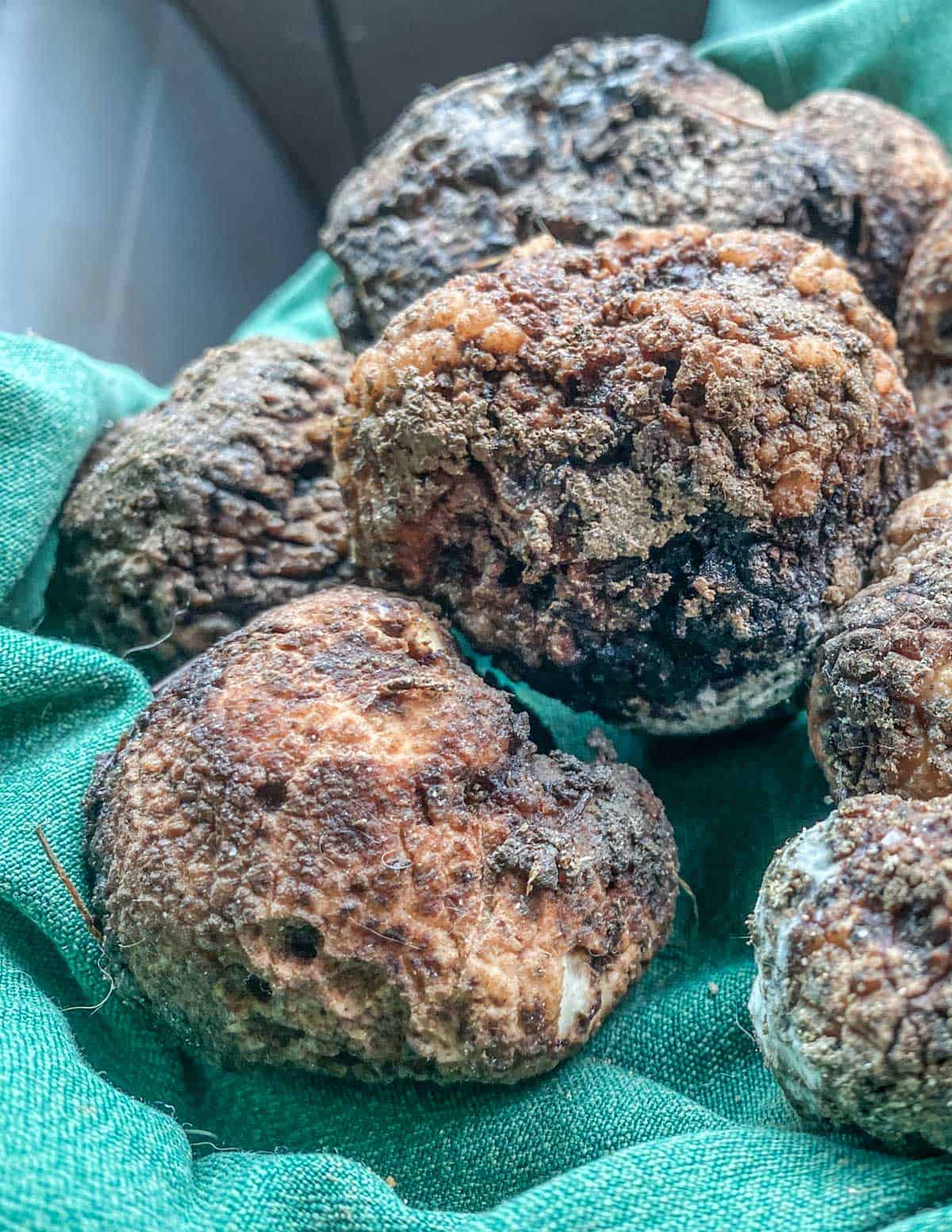
Often what happens with truffle cultivation is that someone finds a spot they'd like to try and grow European truffles, then has to adjust the soil pH with lime until it gets to the right level.

The beauty of Blue Ridge and other native species like pecan truffles (Tuber lyonii, also sold commercially) is that they require no soil augmentation. Natalie and Luke also said that their patches seem to produce a robust natural crop, and on more than one occasion they've come home with a pound of truffles at a time.
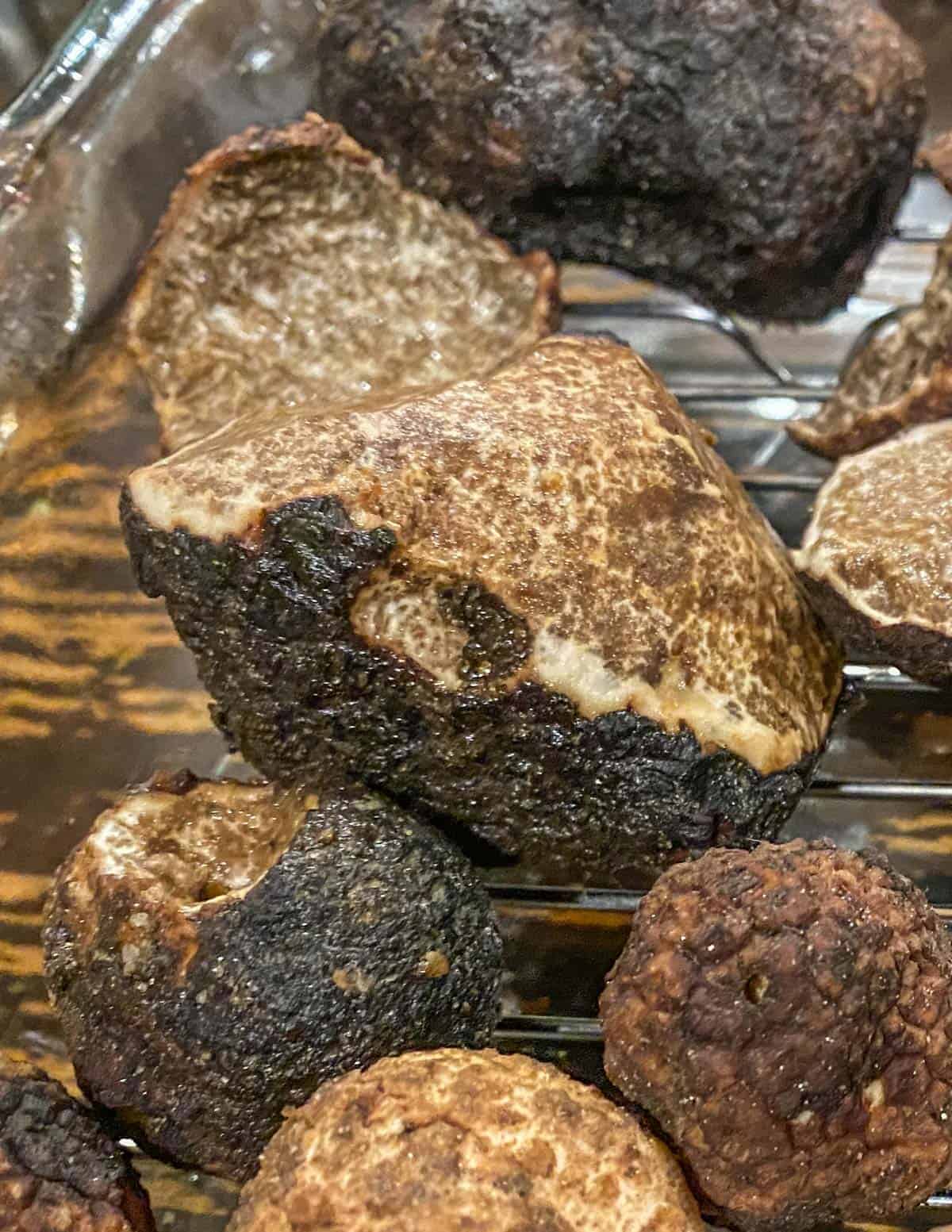
From there, as with maple syrup, ramps and hickory nuts, a little work managing the forest in a way that encourages the truffles to grow could increase the harvest, and keep the forest mostly untouched.
Hunting Blue Ridge Truffles with Dogs
More and more, truffle hunters in the United States are taking a page from Europeans and using dogs. More than a mushroom-sniffing sidekick, using a dog's nose ensure their prizes are harvested at peak aroma.
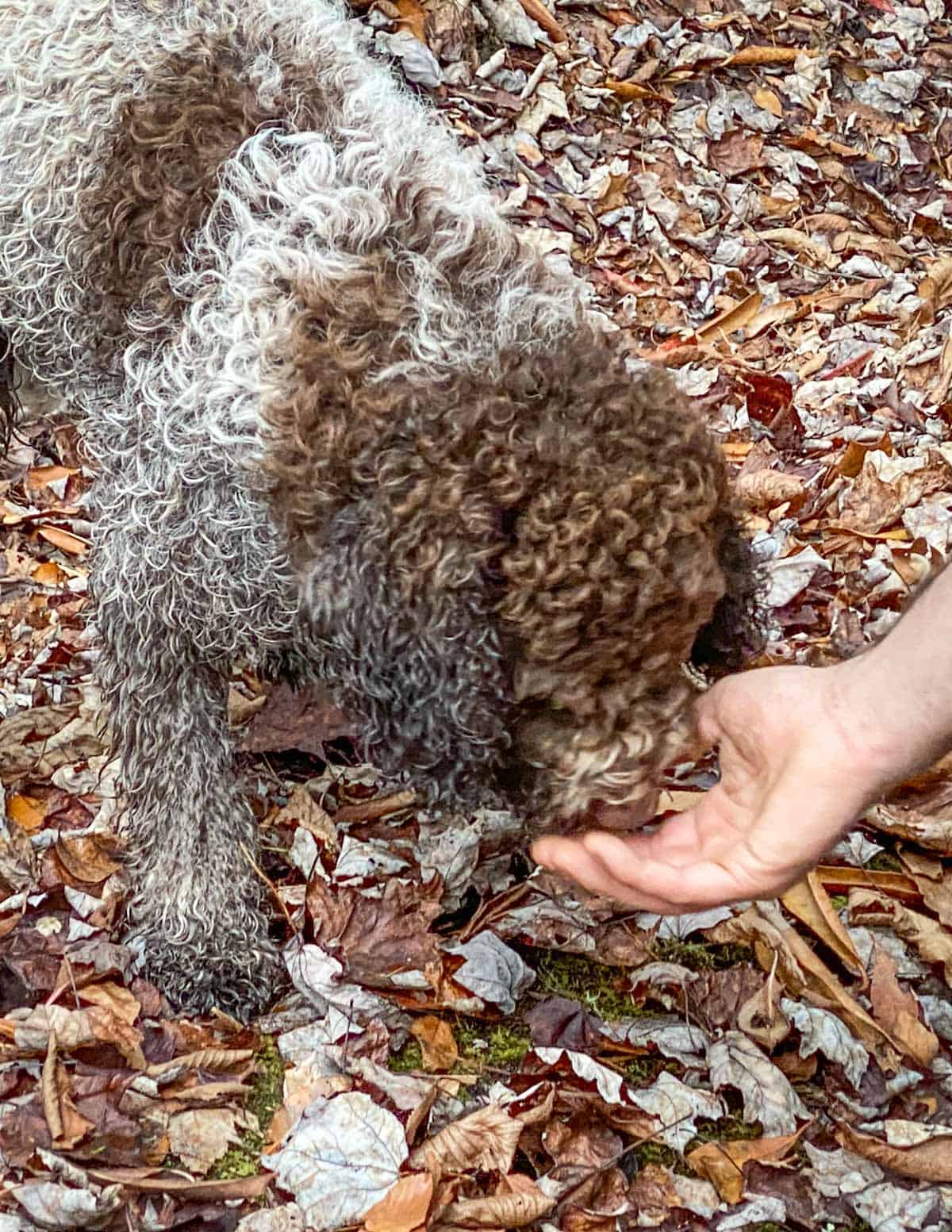
Not everyone is up to speed on the best practices for harvesting though. Some harvesters use rakes that disturb large swaths of woods, meaning the fungi can be harvested when they're not at their aromatic peak, which, for a truffle, is everything. I've heard raking is part of why Oregon, and especially Chinese varieties get a bad rap. Raking can also disturb the mycelium and harm future truffle harvests.
Many dogs can be trained to hunt truffles, but mushroomers prefer the Lagotto Romagnolo-the most famous truffle-hunting breed in the world. Natalie and Luke got their dog Eva through King of the Truffles Kennel, in Serbia, who specifically breed Lagottos for the purpose.
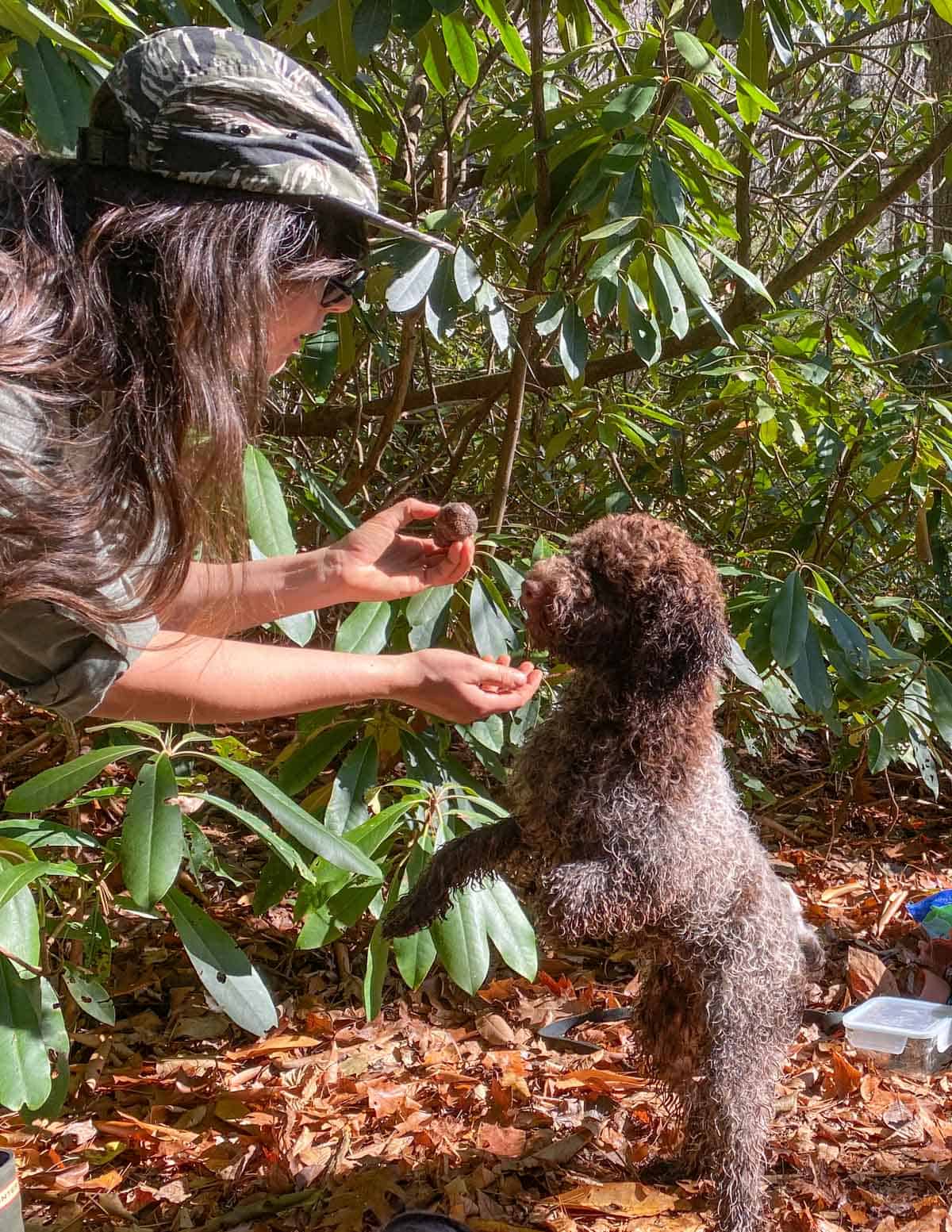
Buying a dog from overseas might sound dicey, but Natalie gave a good review of the process, saying Eva is "a completely healthy, perfect dog with a perfect temperament." After Eva showed up, they took her to truffle-hunting courses run by a company in the Pacific Northwest.
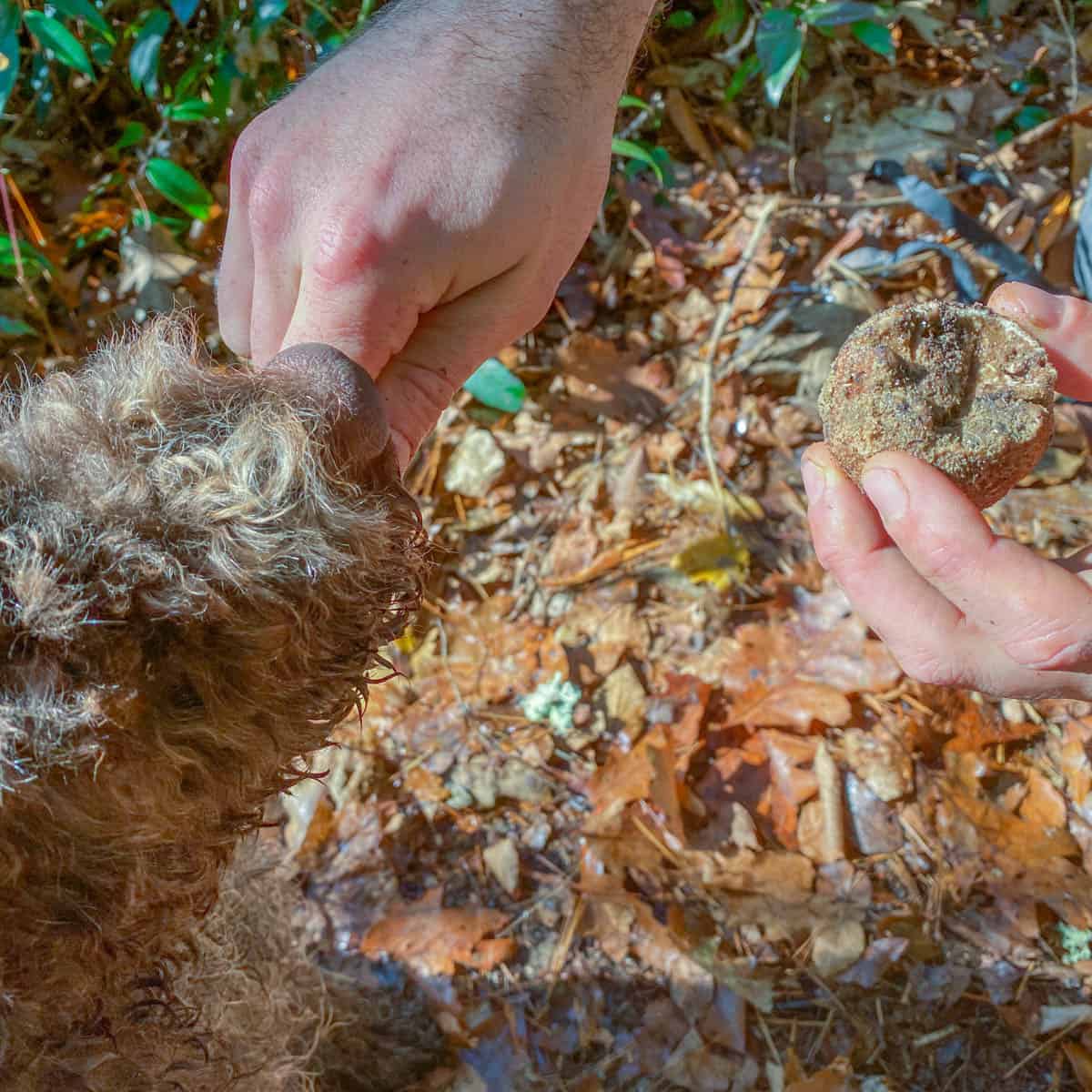
If you have a dog you know how powerful their noses are, and they can apparently smell truffles underground up to 30 yards away. Pigs were traditionally used ages ago, but they're greedy. Eva delivers her finds in exchange for pieces of cheese, or a tennis ball.
Flavor and Aroma
At first I get truffle aroma. The scent is there, but just like the Hungarian Honey Truffles that smells of blue cheese and funk, and the invasive tuber brumale that tastes of truffle and woodsmoke, it has the truffle aroma, just mixed with another scent.

With the Blue Ridge Truffle it’s a smell I can only describe as reminding me of the first sniff of piquant cheese, like a sheep-milk pecorino. There’s a sharp edge to the aroma, and I get a not-unpleasant hint of the ammoniated smell that appears in washed-rind cheeses nearing the end of their shelf life. The flavor of them is mushroomy and cheesy, filling up your sinuses after you eat a slice.
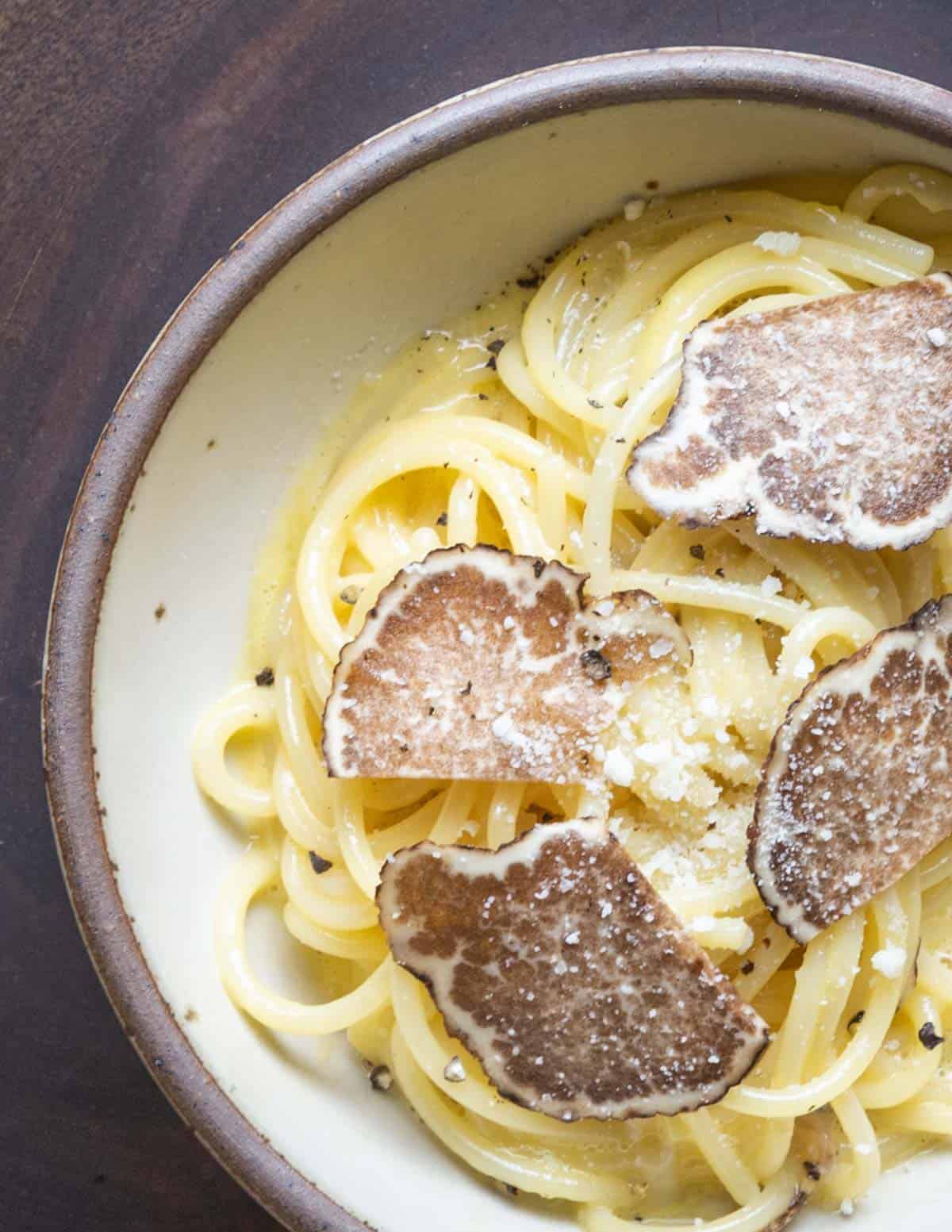
They're an excellent truffle-one of the best I've had besides the famous European varieties. Each slice gives waves of cheesy mushroom flavor. Like most North American varieties I've had, they'll be best if they're as fresh as possible and the aroma will weaken with age.
Like black truffle varieties, Blue Ridge truffles can withstand a little cooking (unlike white truffles) but they're going to be at their most aromatic raw. One of my favorite truffle recipes is simple sliced and put on top of something warm like a simple truffle pasta or truffle risotto with butter and cheese to release their aroma.
Like most varieties, fresh truffles can be infused into truffle oil and truffle butter. Here's a great, simple recipe for enjoying their unique flavor.
Further Reading
- Imaia, a new truffle genus to accommodate TerJezia gigantea
- The South brings new approach to expensive, mystery mushrooms
Related Posts
Spaghetti with Blue Ridge Truffles
Equipment
- 1 3 quart pasta pot
- 1 10 inch saute pan
Ingredients
- 1 tablespoon unsalted butter
- 1 small clove garlic
- 1 oz finely chopped shallot
- ½ cup heavy cream
- 15 grams fresh truffle in one piece or one small ping-pong ball sized truffle
- Splash of dry white wine
- 6 ounces cooked spaghetti or 3 oz dry
- 1 large egg yolk at room temperature
- 2-3 tablespoons grated pecorino cheese plus more for serving you can substitute parmesan here
- Kosher salt to taste
- Fresh ground black pepper to taste
Instructions
Infuse the cream and eggs
- Take 5 grams (½ tablespoon) of chopped truffle and mix it into the cream and refrigerate overnight. Store some eggs in a jar with the whole truffle if possible, ideally for a few days.
Pasta
- Bring the egg and cheese to room temperature.
- Bring a pot of lightly salted water (1 teaspoon per quart) to a boil and add the spaghetti.
- While the spaghetti cooks, make the sauce.
- Finely chop the garlic and shallot and sweat in the butter for 3-4 minutes, until tender and translucent. Add the wine and reduce by half.
- Add the truffle cream and bring to a simmer.
- Dain the pasta and add 6 ounces of it to the pan with the cream and 1-2 tablespoons of pasta cooking water.
- Heat the pan on medium-low for a minute or two, stirring to coat the noodles with sauce until barely thickened. Remove the pan from the heat, add the egg yolk, cheese, and a couple grinds of pepper and mix very well with tongs.
- If the sauce looks loose, add a little extra cheese, if it’s too thick, add a spoonful of pasta water.
- Taste the sauce and adjust the salt if necessary. Divide the pasta between two heated bowls, twirling the pasta into a small mound. Garnish the finished pasta with as many sliced truffles as you can, then eat.

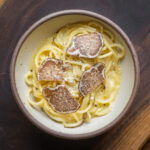
JonnBiz
Thanks for this great information regarding The Blue Ridge Truffle or Imaia gigantea. I have searched it in google and find your article very informative.